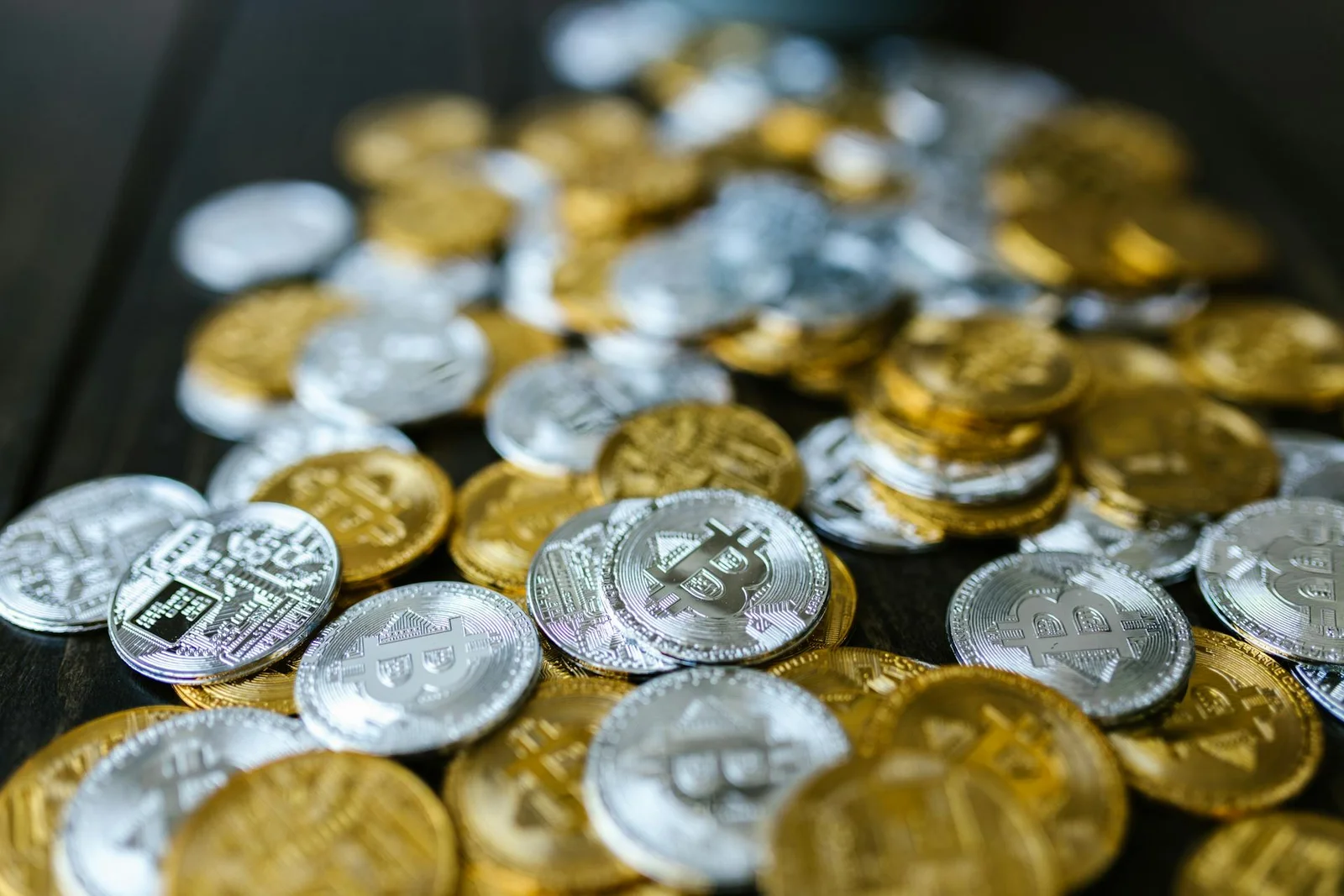News
Altcoin News
Altcoin News
Browse all Altcoin related articles and news. The latest news, analysis, and insights on Altcoin.
ETC Comment and Price Analysis August 7, 2025
ETC/USDT Technical AnalysisWhen we analyze the Ethereum Classic (ETC) chart, we see that the uptrend has still persisted since March. The price has tested the trendline many times, but the sellers have always stepped in. ETC is trading at around $20.25 following the sell-off after it surged to the level at $27.07. Rising Trend ETC is currently struggling to hold above the support level at around $19.68, and it can test the resistance level at $22.53 again if it holds here. In case the price breaks above this resistance, then the momentum could propel the price towards the range between the levels at $25.79 - $27.07.In the event that this green band breaks, the price may first jump to $31.42 and then to the level at $39.00. If we see a downward action, we should be following the support levels $18.5, $16.65, and $15.79 respectively.These analyses, not offering any kind of investment advice, focus on support and resistance levels considered to offer trading opportunities in the short and medium term according to the market conditions. However, traders are responsible for their own actions and risk management. Moreover, it is highly recommended to use stop loss (SL) during trades.

Binance's "Test" Coin Experiences Flash Drop: 70% Melt in 1 Hour
On the morning of August 7th, the Test (TST) token attracted attention with a sudden and sharp drop in the market. The decline, which began in the morning hours, caused the token's price to lose nearly 70% of its value. According to data, the TST price reached a high of $0.0496 and a low of $0.01547 in a one-hour candlestick. Following this sudden move, the price stabilized around $0.0267. The market capitalization was estimated at approximately $25.33 million. The TST/USDT spot trading pair on Binance generated a total trading volume of $50.37 million in the last 24 hours. $15.95 million of this volume occurred during the one-hour period of the decline. After the price stabilized at lower levels, trading volume increased again, reaching $12.25 million within an hour. Total futures positions on the TST network decreased by 28.86% in the last 24 hours, falling to $25.76 million. Meanwhile, the total 24-hour trading volume of TST/USDT contracts across all platforms reached $266 million. This volume saw a 1,173% increase, while contract trading volume on Binance alone reached $205 million. The increase in trading volume on Binance was recorded as 1,855%.There is currently no information regarding the trigger behind the decline.What is TST?TST is a token known as a "Test Token" created on BNB Chain using the BEP-20 standard. Originally developed for training and testing purposes, TST was used as a sample token in BNB Chain's developer documentation. However, it later began to be traded by the community and individual investors.The token went viral in the Binance Smart Chain community in May. Its price rose rapidly, particularly on social media, following its inclusion in TST's developer documentation and the perception that it was "Binance-backed." Some analysis platforms reported that TST gained more than 4,000% in value in just a few days, and its market capitalization quickly surpassed $500 million.Following this rapid rise, TST experienced a major sell-off in May 2025. The price lost approximately 40% of its value, particularly after a whale sold approximately $7 million worth of TST. While the price recovered somewhat following this sale, high volatility persisted.The increase in volume and position decreases, particularly in the last 24 hours, indicate heavy trading activity in both spot and futures markets. Price fluctuations are expected to continue in the short term.

KakaoBank Joins South Korea's Stablecoin Race
KakaoBank, one of South Korea's leading digital banks, is preparing to enter the country's rapidly growing stablecoin sector. The company is evaluating plans to both issue stablecoins and offer custody services. This move comes shortly after the South Korean Central Bank halted its central bank digital currency (CBDC) pilot project.KakaoBank takes the reins for stablecoinsKakaoBank Chief Financial Officer (CFO) Kwon Tae-hoon announced at the meeting where the bank announced its first-half 2025 financial results that it is actively evaluating various methods related to the digital asset ecosystem, particularly stablecoin issuance and custody services. "We plan to actively participate in line with market dynamics," Kwon said, noting that strategic steps in this area are being coordinated with other units within the Kakao ecosystem.KakaoBank is currently part of a weekly stablecoin-focused task force that includes Kakao, KakaoPay, and the bank. This strategy team is led by Kakao CEO Chung Shin-ah, KakaoPay CEO Shin Won-keun, and KakaoBank CEO Yoon Ho-young.From CBDC pilot to stablecoin move: The process continuesKakaoBank's shift towards stablecoins was significantly influenced by the Central Bank's cancellation of the CBDC testing process. This project, which had previously entered the testing phase with commercial banks, was suspended after President Lee Jae-myung introduced a new bill enabling stablecoin issuance.Kwon Tae-hoon emphasized that KakaoBank is in an advantageous position in the sector in terms of technical infrastructure, saying, "We participated in both phases of the CBDC pilot; we developed wallets and managed transfers and transactions." Furthermore, over the past three years, the bank has gained experience in complying with KYC and AML regulations, such as opening real-name accounts for crypto exchanges. The new government, which took office following the June 3rd elections, is aiming to reform the financial system. President Lee Jae-myung has pledged to issue a stablecoin pegged to the Korean won (KRW). This stablecoin is intended for use in both domestic trade and international payments.However, Central Bank Governor Lee Chang-yong remains cautious about the stablecoin plans. According to local media outlet Kukmin Ilbo, Lee remains skeptical about the risks and long-term impact of stablecoin issuance.This shift in the stablecoin space has sparked significant individual investor interest in South Korean markets. Shares of Circle, the US-based company that issues USDC, were the most purchased foreign stock among Korean investors in June. Industry representatives speaking to Korean media indicate that Circle is in contact with local regulators to enter the Korean market.Meanwhile, a new law in Hong Kong, which took effect on August 1st, has launched a licensing regime for stablecoin issuers.
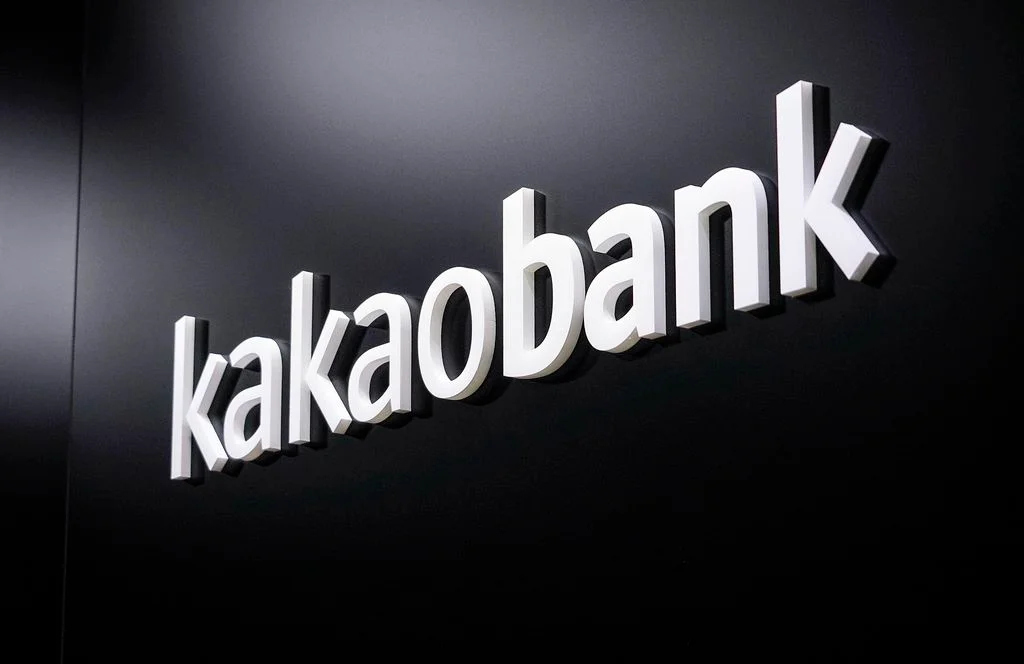
What is Bitget Token (BGB)?
We encounter new names every day in the crypto world. Sometimes these names emerge from exchange platforms, sometimes from game projects, and sometimes from meme culture. But there are others that grow quietly while gradually gaining acceptance with a robust infrastructure and user-centric vision. Bitget Token (BGB) falls right into this category.You may have heard of Bitget before. Founded in 2018, this crypto exchange has begun to make a name for itself globally in recent years, starting in Asia. With its user-friendly features like "copy trading," secure infrastructure, and active community management, Bitget has caught the attention of many investors. As a natural consequence of this growth, the platform felt the need to create its own value cycle, and that's precisely where Bitget Token (BGB) entered the scene.So, what is Bitget coin? In its simplest form, BGB is the native cryptocurrency developed by Bitget crypto exchange to power its own ecosystem. In this guide, we will go beyond the technical structure of Bitget Token and explain: We'll explain in detail how it emerged, how it gained value, what opportunities it offers investors, and what path it's heading in the future. If you don't want to gloss over the question, "What is Bitget token?" with just a superficial answer, let's delve deeper together.Definition and Origins of Bitget TokenBitget exchange has established itself as a strong presence among emerging crypto platforms in recent years. Its user-friendly interface, innovative features like copy trading, and wide product range have attracted the attention of many investors. However, an exchange isn't just notable for its trading interface; it's also for the ecosystem it creates within itself. At this point, a structure emerged that nourishes Bitget's inner world and aims to offer even more benefits to its users: Bitget Token (BGB).BGB token is a digital asset developed by Bitget to offer special advantages to its community. In fact, we know this story from other major exchange tokens. Just as Binance's BNB, OKX's OKB, and KuCoin's KCS have established ecosystems within their platforms, Bitget decided to follow a similar path. Aiming to increase user loyalty by offering lower transaction fees, exclusive event access, passive income opportunities, and additional on-platform features, Bitget launched BGB to achieve this goal.Technically, BGB is an ERC-20 token. This means it runs on the Ethereum blockchain, providing it with both high security and broad compatibility. Since many wallets, DeFi applications, or platforms currently support the ERC-20 standard, BGB can seamlessly integrate with this infrastructure.But the most important aspect isn't the technical details; it's the token's philosophy. Bitget was looking for ways to offer more value to its growing user base and connect them to more platforms. Because simply making transactions isn't enough; users also want to earn, participate, and have a say. BGB addressed this need. After launch, it became available not only on centralized exchanges but also in products like Bitget's decentralized wallet application, Bitget Wallet. This created an ecosystem token that wasn't limited to exchanges but also expanded with Web3 integrations. Services on Bitget. So, when exactly was this token launched? BGB's birthday is July 26, 2021. That day, it officially joined the crypto world by listing on the Bitget exchange. The launch price was quite affordable: it was offered to investors at a modest price of $0.0585. It may not have generated much buzz at the time, but no one could have predicted what a significant cornerstone BGB would become over time.The token's total supply was set at 2 billion units. This is a fairly standard initial supply compared to many exchange tokens on the market. However, this entire supply wasn't released at once. Approximately 1.4 billion BGB entered circulation immediately upon launch. The remainder was allocated to serve carefully planned, long-term goals.For example:20% was set aside for team and employee incentives. This has made BGB a structure that provides rewards not only to investors but also to those working on the project. 15% was used for brand collaborations, campaigns with influencers and content creators. This strengthened the marketing aspect of the project.Another 15% was allocated to referral programs. This means everyone who brought new users to Bitget was incentivized with rewards from this token.Another 15% was allocated to the ecosystem development fund, providing resources for the platform's future technological and strategic steps.Finally, 10% was transferred to the Investor Protection Fund. This fund serves as a significant reserve created to protect users against potential risks and ensure the platform's sustainability.This entire distribution structure clearly demonstrates that Bitget operates not just with a "let's issue tokens" mentality, but with a long-term, balanced growth goal. Another noteworthy detail is that Bitget didn't forget its previous token, BFT, when launching BGB. During the launch, 25% of the total supply was distributed to existing BFT holders via swap. This way, existing users were not only spared the burden but also integrated into the new system.As a result, the creation of BGB was not merely a crypto asset, but a benefit-focused and strategic step that directly reflected Bitget's vision to its users. Today, it offers investors a versatile range of uses, not only with its on-exchange advantages but also with staking programs, launchpad access, and Web3-enabled features. In this respect, it distinguishes itself from many exchange tokens and has established itself at the heart of a robust ecosystem.Bitget Token's History: Key MilestonesCrypto projects, just like people, grow and transform over time, sometimes changing direction with critical decisions. Bitget Token (BGB) has established a structure that has undergone this transformation process and grown stronger step by step at every stage. It has experienced many significant developments since its launch; however, 2024, in particular, stood out as a turning point in BGB's fortunes.Let's now examine BGB's historical development:2021 - Launch: Bitget Token first appeared on July 26, 2021. Launched on the Ethereum network using the ERC-20 standard, BGB was listed at a launch price of approximately $0.0585. The total supply was set at 2 billion tokens, of which approximately 1.4 billion entered direct circulation. This officially joined the ranks of crypto exchanges issuing their own native tokens.2022 - Initial Expansion: BGB's use case was not limited to transaction fees. With the launch of decentralized products like Bitget Wallet, the token began to gain traction on the Web3 platform. At the same time, it became a token that attracted investors with its staking, launchpad, and passive income models.2023 - Community and Collaborations: This year, Bitget organized numerous campaigns to introduce BGB to a wider audience. Social media activities, influencer/celebrity collaborations (like Messi), community rewards, and profit sharing through copy trading fueled interest in the token. 2024 - The Big Burn and Buyback & Burn Period: December 2024 marked a turning point for BGB. In its updated BGB whitepaper, Bitget announced that it would burn 800 million tokens. This meant the permanent destruction of 40% of the total supply, or approximately $5 billion worth of BGB. With this major move, the total supply dropped from 2 billion to 1.2 billion BGB. With this burn, Bitget initiated the process of transitioning BGB to a deflationary model. Later that year, Bitget wasn't content with just this big burn. It also announced a sustainable mechanism called "buyback & burn." Under this system, the exchange buys BGB from the market with 20% of its quarterly profits and burns these tokens. In other words, reducing the supply has moved from a one-time decision to a regular, long-term strategy. The supply change after the coin burn was as follows:PeriodTotal Supply (BGB)Burned Amount (BGB)Remaining Supply (BGB)July 20212,000,000,00002,000,000,000Launch price: $0.0585December 20242,000,000,000800,000,0001,200,000,00040% of total supply was burnedDecember 2024 - All-Time High (ATH): The market quickly responded to the impact of the massive burn and buyback system. By the end of December, the BGB token reached an all-time high of $8.49. This represented a valuation of almost 150 times its 2021 launch price.2025 - Remains Strong: As of 2025, BGB naturally experienced a slight pullback after its peak. However, as of July, its price hovered around $4.55, while its total market capitalization was still over $5 billion. This demonstrates the token's continued strength and the continued validity of Bitget's long-term strategy. Why Is Bitget Token Valuable?So far, we've examined in detail when BGB emerged and how it evolved. So, let's get to the heart of the matter: Why is the BGB token valuable? What features make it an investable and long-term asset? Does it simply offer a discount on transaction fees, or is there more to it? Let's take a look at the aspects that make BGB valuable.Transaction Fee AdvantageFor those who regularly trade in the cryptocurrency market, commission rates become a significant cost over time. This is where BGB comes in. Bitget offers its users a discount on transaction fees of up to 20% when they trade with BGB. This discount translates to significant savings in the long run, especially for spot traders. Just imagine, a user who makes dozens of transactions a day could save hundreds of dollars at the end of the year simply because they pay commissions with BGB. This makes BGB not only an investment but also a savings tool. Early Bird Tickets to Launchpad and LaunchpoolOne of the things crypto investors love most is getting early access to new projects. Bitget doesn't leave its users alone in this regard. BGB holders can participate in Launchpad events organized on the platform and invest in tokens of high-potential projects before they even launch. In other words, the "early bird wins" principle applies here. Furthermore, thanks to the Launchpool feature, users who stake BGB have the opportunity to earn new tokens for free. You receive rewards without investing and have the opportunity to discover new projects. In short, if you have BGB in your pocket, Launchpad's doors are open to you. The differences between Bitget's services, namely Launchpad, LaunchX, Launchpool, and PoolX, are as follows:FeatureStrengthsPerfect ForBitget LaunchpadEarly investment opportunities, rigorous project selection, user-friendly participationVisionary investors and crypto enthusiasts looking to ride blockchain trendsBitget LaunchXTransparent allocation mechanism, access to premium projects, snapshot-based pricingWeb3 enthusiasts and dedicated investors seeking fairness and quality accessBitget LaunchpoolConsistent hourly rewards, flexible unlocking, real-time APR updatesBeginners and risk-averse users seeking flexible and steady crypto earningsBitget PoolXProportional incentives, quick feedback with hourly earnings, detailed tracking and transparencyActive users who value immediate results and frequent rewardsStake, Earn Easily: Passive Income OpportunitiesBGB doesn't just offer transactional advantages; it's also the key to generating passive income. Thanks to Bitget's Earn programs, users can stake their BGB and earn returns at certain rates. This system is similar to depositing money in a bank and earning interest. Users who lock BGB, especially in "stake-to-mine" systems, earn additional BGB rewards and can benefit from airdrops from certain projects. This means they can earn not only by holding but also by contributing to the system. It's a highly attractive option for long-term investors.VIP privileges, Groupcoin discounts, and profit sharingBitget positions BGB not just as a "token" but as a membership card. Holding a certain amount of BGB in your wallet automatically enrolls you in the VIP program. This means you'll receive additional discounts on transaction fees, dedicated customer support, fast support lines, and many other benefits. Additionally, a feature called Groupcoin allows users who hold BGB to purchase popular cryptocurrencies at a discount during certain periods. In other words, you can buy a coin worth $100 in the market for $85.And there's more: In Bitget's highly popular copy trading system, BGB holders can both become followers and share a portion of the revenue generated by successful traders. For example, up to 10% of the performance fee paid by investors who follow a trader can be transferred directly to the leading trader in BGB. This rewards successful traders and expands the use of BGB.And let's not forget: daily prize-winning events like the Bitget Lottery, free withdrawals, special campaigns, and many other bonus features are also exclusive to BGB holders. In short, BGB acts like an entrance ticket to Bitget's closed-circuit club.Real-World Usage: Bitget Pay and cardsOne of the biggest criticisms of cryptocurrencies is the claim that they "can't use them in daily life." However, Bitget has taken steps to make BGB usable not only within the platform but also for real-world transactions. Thanks to the Bitget Pay feature, users can make payments with BGB or make instant transfers to other users.Even better, BGB can be used for direct spending with the crypto payment cards Bitget offers. Grocery shopping, bill payments, and even online shopping sites offer the option to pay with BGB. Furthermore, various discounts and cashback advantages are offered during these transactions. In other words, a token structure that earns you money as you spend has been created. Here, BGB is not only an investment but also an active payment tool.A Rising Role in DeFi and Web3Bitget's goals are not limited to its own centralized exchange. With the updates announced at the end of 2024, BGB is now actively used within Bitget Wallet. This integration has enabled BGB to play a much larger role in the world of decentralized finance (DeFi) and Web3. The token's use to pay transaction fees (gas fees) across multiple chains, in particular, signifies significant broader use. It is also expected to play an active role in areas such as staking, liquidity provision, yield farming, and DAO governance.Who is the Founder of Bitget Token?One of the most frequently asked questions in the crypto world is: "Who is behind this token?" A project's credibility, sustainability, and potential are often directly linked to the vision of the team that created and manages it. However, when it comes to the BGB token, the answer isn't a classic "founding name." In other words, it's impossible to cite a single person, like Vitalik Buterin founding Ethereum or CZ creating Binance. BGB is a platform token created directly by the Bitget exchange.In other words, if you ask whose project the BGB token is, the answer is quite clear: it's the Bitget exchange's project. Founded in 2018, Bitget has grown globally over the years, operating in many countries and proving itself particularly in the field of copy trading. During this growth process, it launched its own native token to enrich the user experience and strengthen the ecosystem. Thus, BGB was born. Of course, there were key figures involved in the development of this token. Bitget has an experienced and visionary management team that has played a significant role in its current success. Gracy Chen, in particular, is one of the most prominent names on this team. She joined Bitget in 2022 and was appointed CEO just one year later, in 2023. Under her leadership, Bitget has entered a second wave of growth, expanding its Asian market presence to regions like Europe and the Americas.As a leading female figure in the industry, Gracy Chen stands out for both her communication with the community and her strategic initiatives. She also played a significant role in clarifying the BGB token's vision and transitioning to a deflationary model. In other words, it's safe to say that BGB isn't just a technical project; it's shaped by leadership that listens to the community.Of course, Gracy Chen isn't alone. Bitget's current senior executives include prominent figures such as Vugar Usi Zade (COO), Hon Ng (CLO), and Min Lin (CBO). These individuals guide the company in many areas, from operational processes and legal structuring to corporate partnerships and community strategies. Vugar Usi Zade, COO, manages critical projects related to user experience and product optimization. Hon Ng, CLO, oversees Bitget's regulatory processes in various countries, ensuring the company's sustainable global growth. Min Lin, CBO, is responsible for business development and partnership strategies.This team is constantly taking new steps not only in the token's launch but also in how to make it more usable. Developed staking mechanisms, Launchpad processes integrated with BGB, the buyback & burn system, and Web3 integrations are all shaped by the contributions of this strategic team.Frequently Asked Questions (FAQ)Below are some frequently asked questions and answers about BGB:What is the BGB token and what does it do?: The BGB token is the native cryptocurrency used within the Bitget cryptocurrency exchange's platform. It offers many useful features, including transaction fee discounts, early access to new projects (Launchpad/Launchpool), passive income through staking, and VIP membership privileges. In short, BGB is both an easy-to-use tool within the Bitget ecosystem and a currency offering various advantages to its investors.When was the BGB token launched?: The BGB token was launched on July 26, 2021. Initially listed at a price of approximately $0.06, the token was released to users in mid-2021. Therefore, BGB's launch date is 2021 and it has been a cornerstone of the Bitget ecosystem since then.Whose project is the BGB token?: BGB is a direct project of the Bitget exchange. In other words, it was developed and issued by Bitget, not by a separate company or an anonymous team. Bitget's founders and executives are the team behind the BGB token, and this team makes the decisions that shape the token's use cases, burn strategies, and benefits.Why is the BGB token valuable?: The BGB token is valuable because it provides tangible benefits within the Bitget ecosystem. Providing users with discounted transaction fees, entitlement to participate in special events on the platform, and passive income opportunities all contribute to its demand. Furthermore, Bitget's regular token burns, which reduce the supply and make BGB a key asset on both its centralized and decentralized platforms, underpin its long-term value.What advantages does the BGB token offer?: BGB token holders enjoy a number of advantages on the Bitget exchange. Chief among these are transaction fee discounts of up to 20%. Additionally, with BGB, they can gain early access to new project tokens through Launchpad and earn free tokens by staking on Launchpool. Additional privileges such as participation in the VIP program, profit sharing, discounted coin purchases (Groupcoin), and free withdrawals are among the advantages offered by BGB. In short, BGB is a token that enriches the user experience and offers earning opportunities.How is the BGB token supply reduced?: Bitget is implementing a buyback and burn strategy to reduce the BGB token supply. By the end of 2024, 800 million BGB were burned at once, reducing the total supply by 40%. Starting in 2025, a program was initiated to purchase and burn BGB from the market every quarter with a portion of its profits. Thanks to these regular burns, the amount of BGB in circulation decreases over time, making the token deflationary and increasing the relative value of BGB held by existing holders.What peak prices has the BGB token reached in the past?: The most notable peak for the BGB token was around $8.50 in December 2024. This was recorded as an all-time high. It's also worth noting that BGB reached several interim peaks throughout 2024, reaching around $1.70 in November 2024 and then rapidly rising to over $8 towards the end of the year. In 2025, BGB's price remained below this record, but in July 2025, it still held a strong value in the $4-5 range. This demonstrates that BGB has demonstrated incredible performance since its launch and has delivered high returns to early investors.For more content on platform tokens and exchange-based ecosystems, check out our JR Crypto Guide series.

Nasdaq-Listed Company Opens Portfolio: Most Held are BTC and 4 Altcoins
DeFi Technologies Inc. (Nasdaq: DEFT), a financial technology company that bridges the gap between decentralized finance (DeFi) and traditional capital markets, has seen impressive growth since July 2025. Its subsidiaries, Valour Inc. and Valour Digital Securities Limited (Valour), reported $947 million in assets under management (AUM) at the end of July, a 23% increase from the previous month. Bitcoin, Solana, SUI, Avalanche, and CORE were among the crypto assets that accounted for the largest share of the company's portfolio.Valour had the second-best performance of the year, recording net inflows of $14.4 million in July. Total net inflows since the beginning of 2025 reached $90.4 million.Notable ETPs: SOL, DOGE, and SUIThe products that saw the most inflows in the company's ETP portfolio included both established and newly listed assets such as SOL, DOGE, and SUI. Valour's net inflows for these products were as follows:VALOUR SOL SEK: $5.5 millionVALOUR DOGE SEK: $2.66 millionVALOUR SUI SEK: $2.38 millionVALOUR SEI SEK: $1.09 millionVALOUR CRV SEK: $926,000Valour generates its revenue primarily from staking returns and management fees on the assets it manages. In the first quarter of 2025, it generated $10 million in staking and lending revenue and $2.6 million in management fees. As of July 31st, the ETPs with the highest AUM were:VALOUR BTC: $291.9 millionVALOUR SOL: $269.4 millionVALOUR ETH: $86.6 millionVALOUR XRP: $65.1 millionVALOUR SUI: $58.4 millionVALOUR ADA: $51.8 millionValour has over 75 ETPs listed on European and UK exchanges. The company aims to increase this number to 100 by the end of 2025. Recently, eight new products based on digital assets such as BCH, LEO, OKB, POL, ALGO, FIL, ARB, and STX were listed on Sweden's Spotlight Stock Market platform. Valour also entered the Swiss market with its HBAR and ICP staking products. The company holds the most Bitcoin and these four altcoins in its treasuryAs of the end of July, DeFi Technologies' cash and USDT balance stood at approximately $17 million. Its debt remained stable at $6 million. Its digital asset treasury reached $73.5 million, and the portfolio included the following assets:BTC (251.6 units): $29.7 millionSOL (61,000 units): $11.6 millionAVAX (398,321 units): $9.5 millionCORE (7,100,000 units): $4 millionSUI (4,913,918 units): $18.5 millionStillman Digital, one of the company's subsidiaries, processed approximately $1.95 billion in trading volume in July. A strategic partnership was also formed with Ozean, Clearpool's RWA protocol. This partnership aims to facilitate the inflow of institutional capital into real-world assets (RWA). Finally, the trading unit, called DeFi Alpha, generated $114.1 million in revenue since its launch in the second quarter of 2024. Specifically, a one-time arbitrage transaction on May 5, 2025, yielded $17.3 million.
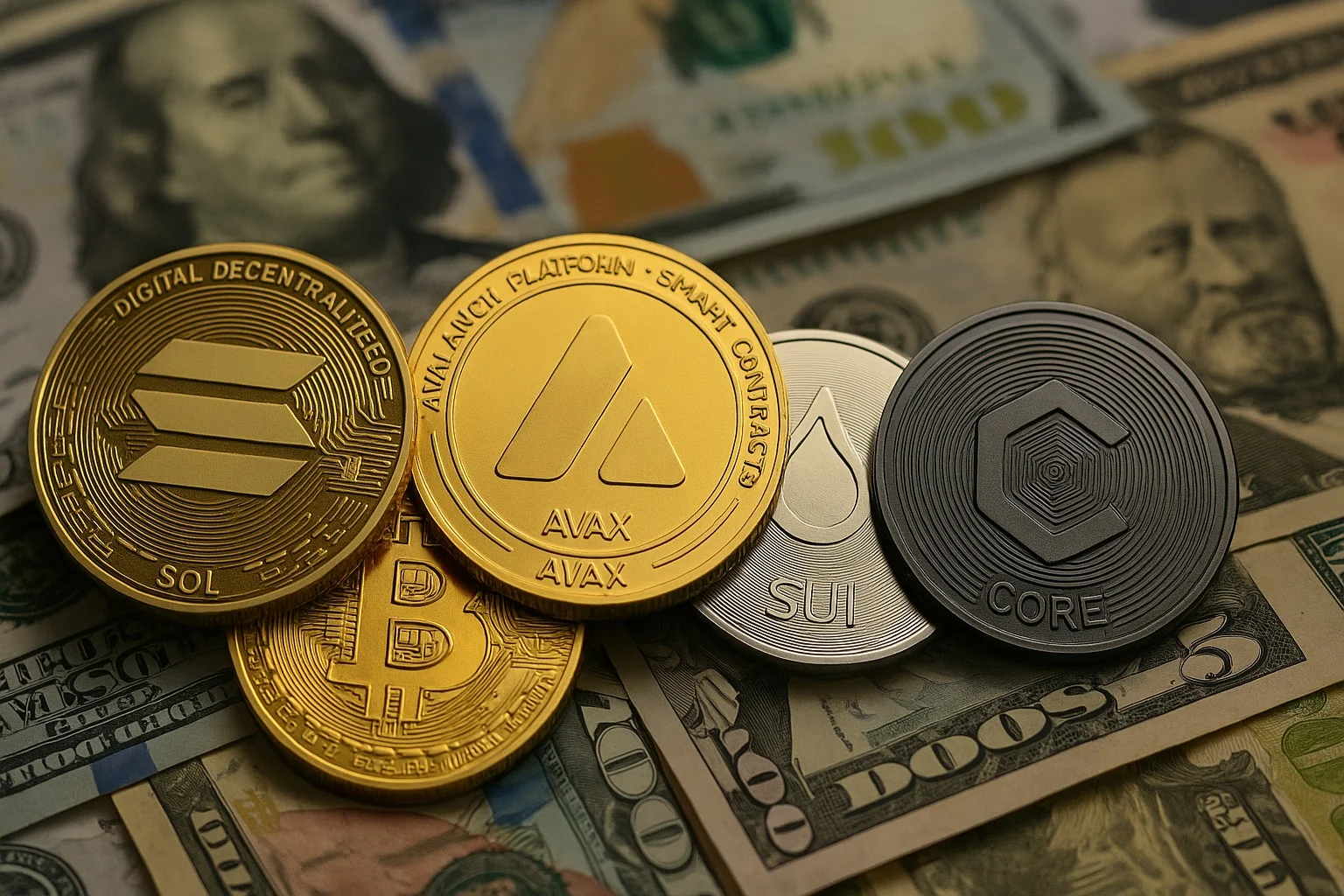
A First in Japan: Application for a Crypto ETF Combining Bitcoin and XRP
Japan-based financial giant SBI Holdings has officially filed an application with the Japan Financial Services Agency (FSA) for a dual-asset crypto ETF (Exchange-Traded Fund) featuring Bitcoin and XRP, marking a first in the country. This move could mark the first time XRP has been considered an institutional-level investment product in the Japanese financial market.Announced in the company's second-quarter 2025 financial report, this new product is called a "Crypto-Assets ETF." The fund aims to provide investors with a single investment gateway offering direct access to both Bitcoin and XRP. The fund's structure aims to offer investors a diversified crypto portfolio by simultaneously monitoring the performance of both assets.Another ETF application is also mentionedSBI has also filed an application for a second product, the "Digital Gold Crypto ETF." This fund plans to allocate more than 50% of its portfolio to gold ETFs and invest the remainder in gold-backed cryptocurrencies. This hybrid structure particularly appeals to investors who are wary of volatility but don't want to completely avoid crypto assets. If the applications are approved by the FSA, XRP will be offered to investors in Japan as part of a regulated investment product for the first time. This is seen as a significant step in the global legitimacy of XRP, which is based on Ripple's payment technologies. As you may recall, XRP remains excluded from many major institutional investment products due to regulatory uncertainties in the US.SBI Holdings CEO Yoshitaka Kitao stated, "This initiative reflects our commitment to integrating blockchain-based assets into the regulated financial system in Japan and Asia."SBI's move is significant for investors in Japan, as well as in Asia in general. It's a fact that institutional investors in this region may see a softening of their approach to cryptocurrencies. Furthermore, the greater acceptance of XRP in Japan could encourage other financial institutions in the region to develop similar products. This development has been met with great excitement in the crypto community, especially among XRP supporters. This group, known as the "XRP Army," interprets SBI's ETF application as a significant milestone in gaining institutional recognition for XRP.As of August 6, 2025, when the news broke, the price of XRP was trading around $2.95. According to JrKripto data, XRP is listed as the third-largest cryptocurrency with a market capitalization of $174.5 billion. Having gained approximately 30% in the last 30 days, XRP has attracted renewed attention due to increased institutional adoption. However, it's worth noting that SBI's move has not yet been reflected in the price.While official approval has not yet been received, SBI's application can be expected to open a new chapter in Japan's crypto finance sector.
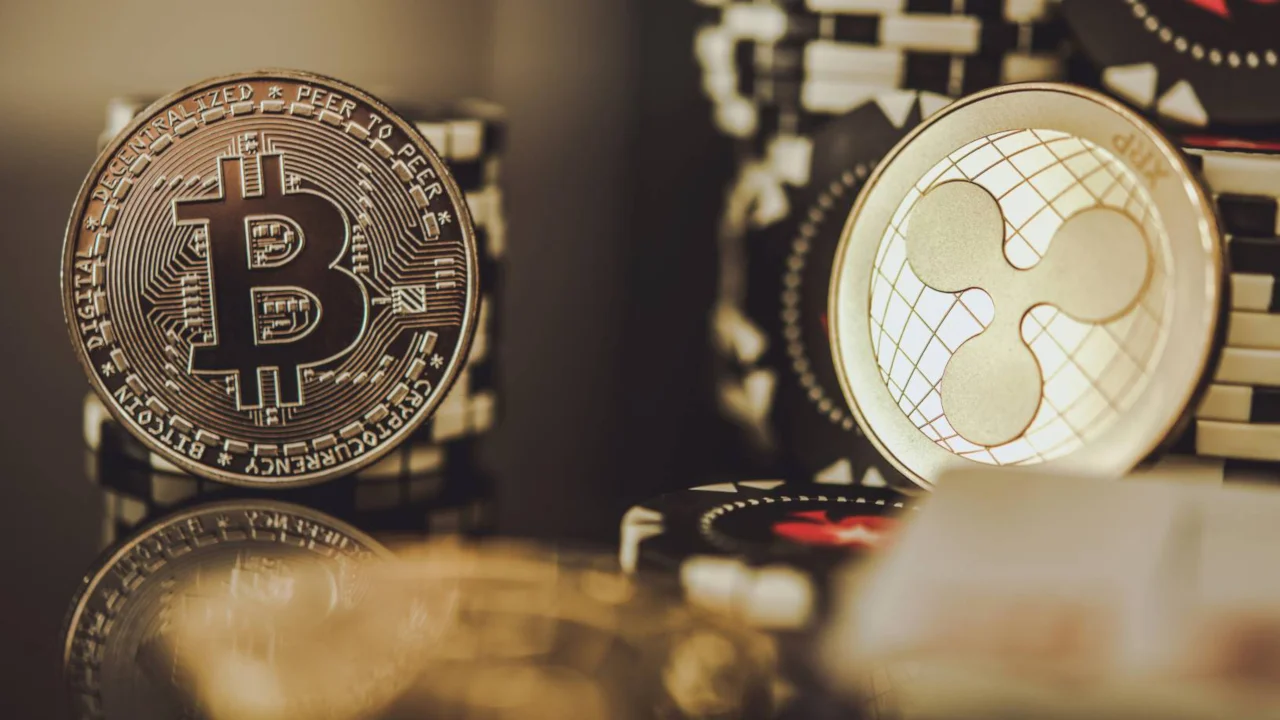
Biometric Data Warning from China: Is It a Hint at Worldcoin?
The People's Republic of China announced that a foreign company is collecting users' iris data in exchange for cryptocurrency, posing a serious threat to national security. The statement released by China's Ministry of State Security (MSS) did not name the company, but the activities described are believed to point to the "World" project, formerly known as Worldcoin.Iris scanning in exchange for cryptocurrency: A global threat?According to information shared by MSS on WeChat, a foreign company collected the iris data of individuals worldwide under the promise of distributing cryptocurrency. The transfer of this biometric data abroad threatens not only personal privacy but also China's national security. Authorities emphasized that iris recognition, in particular, is a highly accurate biometric method used in sensitive areas. This makes this data attractive for malicious use. The MSS stated, "The leakage of such biometric data could have irreversible consequences," and urged the public to remain vigilant.Worldcoin in the news: China targeted without naming itWhile the statement did not mention the company by name, the activities mentioned directly resemble Worldcoin's business model. Founded by OpenAI CEO Sam Altman, Worldcoin aims to scan users' iris data to create unique identities and distribute WLD tokens in return. While the company claims to operate in 160 countries to date, it has no official operations in China.Worldcoin has previously been the subject of investigations in countries such as Indonesia, Kenya, and France for data privacy reasons. Indonesia suspended the project's operating license in May. The company announced that it had halted its identity verification services in that country and was working to clarify relevant regulations.China's harsh stance on cryptocurrency continuesThe Chinese government has long maintained a harsh stance against cryptocurrencies and related technologies. Both cryptocurrency trading and mining are banned in the country. However, this latest statement raises concerns about technological surveillance to a new level.In its statement, MSS highlighted the misuse of not only iris recognition but also other biometric technologies such as facial recognition and fingerprints. It cited examples of foreign intelligence agencies using facial data to create fake identities and thus infiltrate strategic institutions. In the shadow of these discussions, Ethereum co-founder Vitalik Buterin has proposed more inclusive and privacy-respecting digital identity systems. His "pluralistic identity" model, presented in June, advocates for a decentralized identity structure where states, social networks, and community-based systems work together.According to Buterin, a single, traceable digital identity model threatens individual privacy, while methods like "proof of wealth" produce unfair outcomes. In this context, multiple verification systems are emerging as an alternative to projects like Worldcoin.
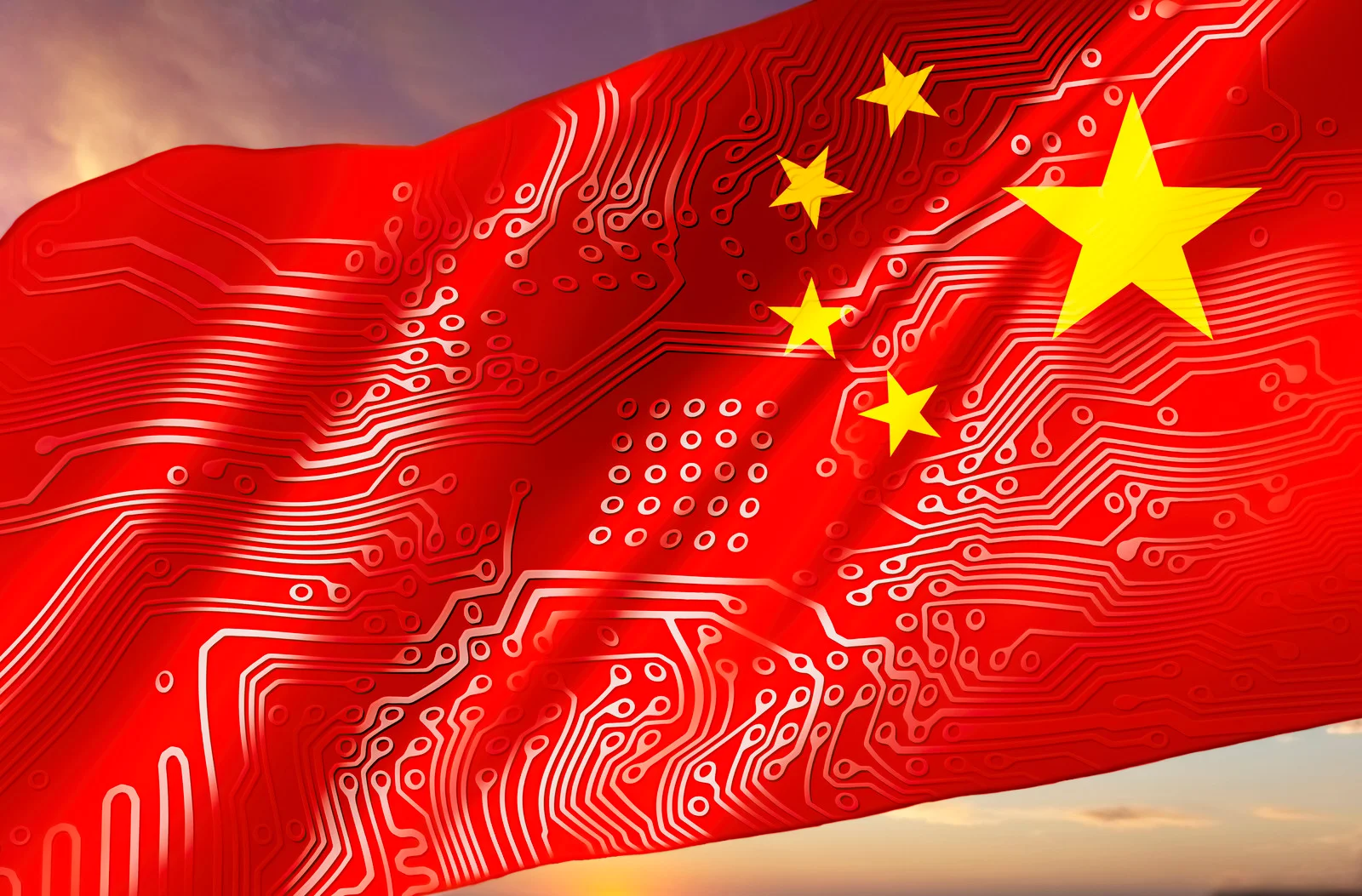
SEC Greenlights Liquid Staking: Criticism Ensues
The U.S. Securities and Exchange Commission (SEC) has presented a new roadmap on a long-awaited issue in the cryptocurrency world. The agency has provided significant relief to the industry by clarifying that some liquid staking activities do not fall under securities laws. This development is considered a critical step toward the approval of staking functionality in spot Ethereum ETFs.Historic Statement from the SECNew guidance published by the SEC's Division of Corporate Finance states that "liquid staking receipt tokens" issued under certain circumstances may not be considered securities. Staking services offered by decentralized protocols such as Lido, Marinade Finance, JitoSOL, and Stakewise are particularly considered within this scope. SEC Chairman Paul Atkins stated, "Today's announcement is a major step toward clarifying the aspects of crypto asset activities that fall outside the SEC's jurisdiction," emphasizing that the agency's newly launched "Project Crypto" initiative is already yielding tangible results. Is the door to staking opening in Ethereum ETFs?According to Nate Geraci, President of NovaDius Wealth, this announcement may have cleared one of the SEC's final obstacles to allowing staking in spot Ethereum ETFs. "Liquid staking tokens could facilitate liquidity management in ETFs," Geraci said in a post on the social media platform X.Large investment firms like BlackRock are also known to be considering revising their Ethereum ETF applications to include staking. This new SEC clarification could pave the way for such strategies.Discussions continue: Are there parallels to the 2008 crisis?However, not everyone is happy with this announcement. Former SEC chief Amanda Fischer heavily criticized liquid staking, comparing it to the rehypothecation practices that led to the collapse of Lehman Brothers in 2008. Fischer stated, “This practice allows clients to make risky transactions using their assets. The SEC’s decision to leave this unregulated demonstrates that the lessons of the 2008 crisis have not been learned.”However, these comments drew significant backlash from the crypto community. Matthew Sigel, VanEck’s head of digital asset research, countered Fischer, saying, “You’re saying the SEC approves crypto and yet you’re saying it’s unregulated. These two statements contradict each other.” Helius Labs CEO Mert Mumtaz argued that Fischer either doesn’t understand the system or is deliberately distorting it.TVL Increases in DeFi SectorThe SEC’s announcement bolstered confidence in liquid staking, leading to a rise in total assets locked in the sector. According to DefiLlama data, the total amount of assets locked in liquid staking protocols has increased by 15% since the beginning of the year.Lido Finance dominates the sector with $31.88 billion in TVL. Binance’s ETH staking service grew by nearly 90%, from $6.05 billion at the beginning of the year to $11.4 billion.
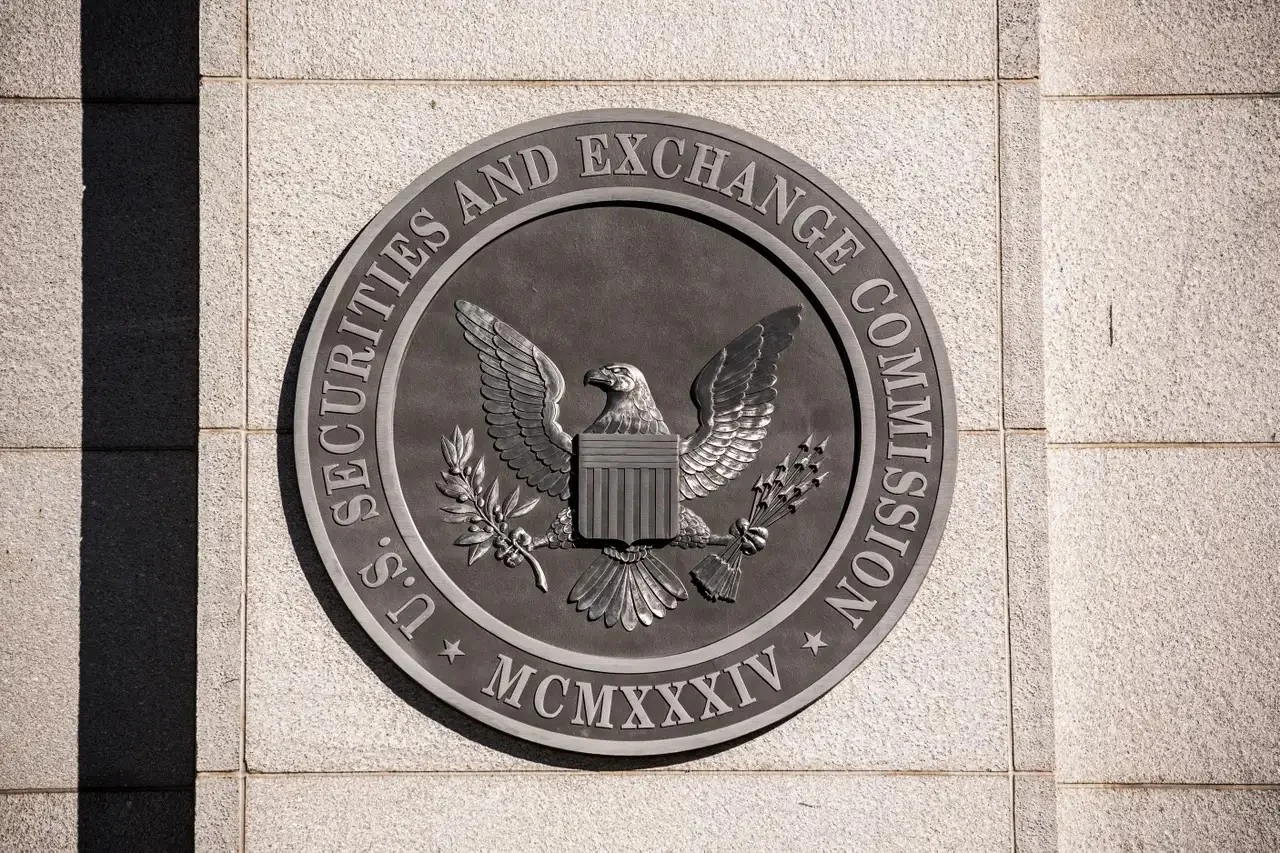
Artificial Superintelligence Alliance (FET) Nedir?
An exciting initiative has recently emerged in the world of artificial intelligence (AI) and blockchain: the Artificial Superintelligence Alliance (ASA). So, what is the Artificial Superintelligence Alliance, and what is FET (Futures and Technologies), which forms the basis of this structure? In short, the ASA is an alliance formed by the joining forces of prominent projects in AI and blockchain, such as Fetch.ai (FET), SingularityNET (AGIX), and Ocean Protocol (OCEAN). The ASA was officially announced in 2024 with the merger of these three projects. This combined structure aims to accelerate decentralized AI development and establish an interoperable, open "superintelligence" (ASI) infrastructure. The FET token continues to be used as the alliance's common cryptocurrency. Following this merger, FET also became known as ASI coin.Each project within the ASA makes a unique contribution to the vision of decentralized AI. For example, if we ask what Fetch.ai is, we can say that it's a platform that brings together autonomous software agents and blockchain. It stands out with its advanced agent infrastructure and blockchain integration. If you ask what SingularityNET is, we encounter a project with a deep-rooted history in AI research, offering a decentralized marketplace for artificial intelligence algorithms and services. The answer to the question of what Ocean Protocol is is: it's a blockchain infrastructure that works on sharing and monetizing data, making the big data necessary for AI applications securely accessible. These three distinct areas of expertise have come together under one roof thanks to the ASI FET merger. Fetch.ai's merger with SingularityNET and its partnership with Ocean Protocol bring together AI agents, machine learning models, and big data sources within a single ecosystem. Thus, ASA brings together all the building blocks needed to achieve the goal of decentralized superintelligence. Now, let's take a closer look at how this structure emerged, its history, and why the FET token is so important. The Definition and Origins of FETThe Artificial Superintelligence Alliance (ASA) stands out as an alliance that brings together artificial intelligence and blockchain projects. At the center of this structure is the FET token, the cryptocurrency of the Fetch.ai project. In 2024, the teams from Fetch.ai (FET), SingularityNET (AGIX), and Ocean Protocol (OCEAN) joined forces to launch the ASA. When this alliance was announced, it was announced that the tokens of all three projects would be combined into a single, universal AI token. While FET continues to be used as the common token, this token is also being called the "Artificial Superintelligence (ASI) token" in the new era. So, if you ask, "What is ASI coin?", we can say that it is the common token of ASA and the new identity of Fetch.ai's FET token. The aim of this new structure is to accelerate decentralized AI development and establish an open superintelligence infrastructure where different AI projects can work together. Today, developments in artificial intelligence are advancing at an incredible pace. This wave of innovation has accelerated even further, particularly with the emergence of large language models (LLMs). The idea of Artificial General Intelligence (AGI) is no longer a dream for many; the next stage, artificial superintelligence (ASI), is starting to be seriously discussed. ASI refers to the development of AI systems far beyond human capabilities, reaching the collective wisdom of humans. This is precisely where the ASA alliance comes in, as they believe ASI should not be concentrated in the hands of certain companies but should develop in a structure that is open and equitable for everyone. The Fetch.ai, SingularityNET, and Ocean Protocol teams are also united around this idea. ASA, a partnership of three projects, aims to establish an independent, community-based AI ecosystem to counter the monopoly of tech giants.The three projects that make up ASA were already pioneers and well-established in their respective fields. The idea behind the merger was to combine the strengths of each to create a much more comprehensive and functional platform. For example, Fetch.ai's blockchain-based autonomous agent technology meets SingularityNET's advanced AI algorithms and R&D experience. On the Ocean Protocol side, secure data sharing and tokenization infrastructure become essential components of this mix. Thus, ASA provides a strong foundation covering every step of AI development. Another important point is that the communities and developer networks of each project are now united under a single roof. As FET, AGIX, and OCEAN token holders come together in the ASA ecosystem, hundreds of thousands of users and developers have begun contributing to this initiative. Such a broad and active participant base provides ASA with significant speed and resilience on its journey to decentralized superintelligence. FET's History: Key MilestonesAlthough the Fetch.ai (FET) project doesn't have a very long history, it has achieved remarkable success in both the crypto world and artificial intelligence. Now, let's take a look at some of the key milestones in FET's journey to date:2017: The Fetch.ai project was founded in Cambridge, England, under the leadership of Humayun Sheikh. The founding team included AI experts such as Toby Simpson and Thomas Hain. During this period, the first foundations for the blockchain-based autonomous agent idea were laid.2019: The FET token was launched in a public sale on Binance Launchpad. This sale, which completed in just 22 seconds, raised $6 million. That same year, the project completed network testing and established its blockchain infrastructure.2020–2023: During this period, the team launched the platform's mainnet in January 2020. Afterward, they focused on real-world applications. Pilot projects were developed in the areas of AI agents, data exchange, and automation. Autonomous agents were tested in smart city systems, decentralized economy applications, and IoT integrations. Collaborations were established with major companies such as Bosch and Festo. New use cases combining decentralized finance (DeFi) and artificial intelligence were also explored. During this period, the team kept the ecosystem vibrant by continuously improving the platform and attending conferences and growing the developer community.2024 (first half): Fetch.ai, SingularityNET, and Ocean Protocol took a major step toward merging. In March, these three projects announced their merger under the name Artificial Superintelligence Alliance (ASA). The FET, AGIX, and OCEAN communities came together for a broader vision and a broader impact. The primary goal was to scale and accelerate AI development. On March 28, 2024, the platform reached an all-time high of $3.45. June 2024: The trilateral merger was officially completed, and the ASA alliance was officially established. In a statement made on June 13th, it was announced that the three networks would now operate as a single ecosystem. The token merger was also implemented during this process. The FET token was converted at a ratio of 1 FET = 1 ASI, and the distribution of ASI tokens to AGIX and OCEAN holders began at fixed rates. Conversion rates were announced as follows: AGIX holders would receive 0.433350 $ASI for every 1 AGIX, and OCEAN holders would receive 0.433226 $ASI for every 1 OCEAN. Thus, FET became the common and universal token of ASA. This merger was one of the first examples of decentralization at this scale in both the crypto world and artificial intelligence. The resulting structure attracted attention with a total supply of 2.63 billion tokens and a combined market capitalization of approximately $7.5 billion. 2025: FET price is trading around $0.60, some 80% below its 2024 record. Why is FET Valuable?For a crypto project to truly stand out, it must stand out not only with its technology but also with the tangible benefits it offers. The FET coin (or its new name, the ASI token) is one such project that stands out with both its technical structure and the robust ecosystem it forms part of. So, what makes FET so special? Let's take a look at its key features and advantages:AI-specific infrastructureThe Fetch.ai network offers a blockchain infrastructure specifically designed for artificial intelligence applications. Its architecture supports much faster and more complex transactions than traditional blockchains. Thanks to this structure, scenarios such as running machine learning models or dozens of autonomous agents simultaneously exchanging data can be easily managed. In other words, the flexibility and scalability required for AI-focused projects lie at the heart of this network.Autonomous agents and data sharingOne of Fetch.ai's most striking features is its support for software components called autonomous economic agents (AEAs). These agents can perform specific tasks on behalf of users; For example, finding the best energy tariff, analyzing bus schedules, or planning a hotel reservation. These transactions are executed on the blockchain using smart contracts and AI algorithms, ensuring transparency and security. Furthermore, with the ASA partnership, Ocean Protocol's data sharing infrastructure has been integrated into the project. This allows large data sets to be shared securely while preserving ownership rights. This entire structure makes data exchange both intermediary-free and reliable. Autonomous agent architecture of FET. Strong Community and Ecosystem ImpactBesides the technology behind FET, one of its most significant strengths is its community and ecosystem. Thanks to its integration with major projects like SingularityNET and Ocean Protocol, a vast user and developer network has emerged. This community, comprising hundreds of thousands of people, fosters the emergence of new ideas and accelerates the growth of projects. This combination creates not only technical synergy but also cultural and intellectual unity. Thanks to the active participation of the community, governance processes operate democratically, meaning the community has a voice in project decisions.FET Token UsesThere are many possible answers to the question of what the FET token is used for. Firstly, FET is used as the primary payment instrument of the ASA ecosystem. This token is used to pay for transactions made on the network. FET is also spent to access AI services, such as running an autonomous agent or generating model output. FET tokens can also be staked. In other words, users contribute to the security of the network by locking their tokens in the network and earn rewards in return. Because the Fetch.ai network is based on a Proof-of-Stake model, staking is critical to the project's operation. Finally, the FET token is used in governance decisions within the ASA ecosystem. Token holders can have a say in project development by voting. It is also actively used in everyday use cases such as in-app purchases and data marketplace transactions.ASI Vision: Decentralized SuperintelligencePerhaps Fetch.ai's most ambitious aspect is its aim not only to provide solutions to today's problems but also to shape the future. The project's long-term vision is to create a decentralized superintelligence (ASI) infrastructure. Toward this goal, Fetch.ai, SingularityNET, and Ocean Protocol have aligned not only technologically but also philosophically. They aim to build an open-source, community-driven, and accessible superintelligence, countering the AI development under the control of large tech companies. While this goal is indeed a grand and time-consuming journey, the ASA has embarked on this journey with a solid foundation. If the alliance achieves this goal, it will create a groundbreaking structure not only in the field of artificial intelligence but also in the crypto world. In such a scenario, the FET (or ASI, as it is now known) token could become both a store of value and a powerful tool on a global scale. Source: DataWallet Who is the Founder of FET?Who is FET? This question is frequently asked by those curious about who is behind the Fetch.ai project. Fetch.ai's founder and CEO is Humayun Sheikh. Even before starting the project, he was known as an entrepreneur with significant experience in the field of artificial intelligence. Being one of the early investors in Google's AI-focused company, DeepMind, demonstrates his vision and courage in this field. In 2017, he launched Fetch.ai in Cambridge, alongside AI and software experts such as Toby Simpson and Thomas Hain. Under Sheikh's leadership, the team developed innovative ideas combining AI and blockchain and quickly attracted attention.Humayun Sheikh also played a significant role in the establishment of the ASA alliance. Working closely with Dr. Ben Goertzel, founder of SingularityNET, they shaped the merger process of the three projects. Ben Goertzel, a globally recognized figure in the field of artificial general intelligence (AGI) and CEO of SingularityNET, was a leading figure in the formation of ASA. On the Ocean Protocol front, founder Trent McConaghy formed the third pillar of this core team. Following the merger, Humayun Sheikh became the ASA Alliance Council Chair, while Ben Goertzel assumed the CEO position.Before the merger, the three projects operated independently with their own teams and communities. They had separate roadmaps and priorities. After the merger, these structures maintained their core identities and were brought together around a common goal. While each project still exists under the ASA umbrella with its own legal structure, strategic decisions are now made jointly. Thanks to the harmonious collaboration of leading figures like Sheikh, Goertzel, and McConaghy, this partnership is developing strong synergy. This structure ensures balanced decision-making processes and more efficient use of resources.In short, Humayun Sheikh not only founded Fetch.ai; He also played a key role in the creation of a visionary alliance like ASA. With both his technological know-how and strategic vision, he was one of the figures who paved the way for the project.Frequently Asked Questions (FAQ)Below are some frequently asked questions and answers about the Artificial Superintelligence Alliance:What is the Artificial Superintelligence Alliance?: The Artificial Superintelligence Alliance (ASA) is a decentralized artificial intelligence alliance formed in 2024 by the Fetch.ai, SingularityNET, and Ocean Protocol projects. The alliance's goal is to develop an open and interoperable "superintelligence" infrastructure by combining artificial intelligence and blockchain technologies. Thanks to ASA, the technological capabilities of these three projects have been combined into a single ecosystem, and the FET token has begun to be used as a common currency.What does the FET token do?: The FET token is the central cryptocurrency of the ASA ecosystem and serves multiple functions. It is primarily used as a payment tool for transactions on the network; in other words, transaction fees for activities such as smart contract transactions or data exchange are paid in FET. Furthermore, the FET token can be staked, contributing to network security, and stakers earn rewards. FET is also a versatile token used to access AI services within the ASA ecosystem (e.g., running autonomous agents) and participate in governance votes.Have FET merged with AGIX and OCEAN?: Yes, Fetch.ai (FET), SingularityNET (AGIX), and Ocean Protocol (OCEAN) joined forces in 2024 to form the Artificial Superintelligence Alliance. This merger brought the technologies and communities of the three projects together under a single umbrella. The tokens were combined under the name ASI (Artificial Superintelligence). While the FET token remained the base token of this new structure, AGIX and OCEAN holders had the opportunity to switch to ASI (FET) tokens at predetermined rates.Is FET decentralized?: Yes, the Fetch.ai network and the ASA alliance operate in a decentralized manner. Fetch.ai is a distributed blockchain network operated by nodes using a Proof-of-Stake consensus mechanism. Network security and transaction verification are not dependent on a central authority; participants worldwide participate in the network by running nodes and staking FET. Furthermore, within the ASA, management and development decisions are made decentralized among the community and foundations rather than a single company, creating a governance model consistent with the principle of decentralization.How can I stake FET tokens?: To stake your FET tokens, you first need a wallet or platform that supports FET. Fetch.ai's own wallet or the staking services of major exchanges can be used for this purpose. Simply delegate your FET to one of the network's validators. You can start staking in a few clicks by downloading the official Fetch.ai wallet, selecting a validator, and then staking. While you're staking, your tokens remain non-transferable, but you'll earn new FET (ASI) rewards at a certain rate. Keep in mind that staking returns and conditions may vary depending on the platform you use; therefore, it's recommended to review the current guidelines before making any transactions.How do AI and blockchain integrate in this project?: In the ASA alliance, AI and blockchain are integrated in a complementary way. Blockchain provides a distributed infrastructure and trust layer, enabling AI agents and algorithms to operate in a transparent and trustworthy environment. For example, Fetch.ai's autonomous agents can interact and execute transactions on the blockchain through smart contracts. SingularityNET's AI algorithms can be served and invoked through this distributed network, and thanks to the Ocean Protocol, they can securely access the big data they need through a blockchain-based marketplace. In short, while AI systems demonstrate their intelligence, blockchain provides the underlying foundation for recording, securing, and incentivizing these transactions through a token economy. Thus, AI and blockchain technologies are intertwined under the ASA umbrella, making next-generation applications possible.Is FET coin's future bright?: Considering the ASA alliance and general AI trends, many are optimistic about the future of FET coin. Because the project's vision is not just to develop a short-term product but to build a decentralized superintelligence in the long term, it will have a significant impact if successful. Of course, crypto markets carry risks, and it's not right to make definitive judgments; however, considering Fetch.ai's strong partnerships, expanding ecosystem, and growing popularity in the AI field, we can say that the FET (ASI) token will continue to make a name for itself in the coming years. Investors and technology enthusiasts are closely following the project's development and hope that FET achieves the goals on its roadmap. Follow our JR Crypto Guide series for more information on AI-based blockchain projects and the vision of decentralized superintelligence.

Trump Shields Crypto Sector: Investigation Into "Debanking" Practices Underway
Former US President Donald Trump is preparing to take action against allegations that various sectors, particularly crypto companies, are being excluded from the financial system. According to The Wall Street Journal, Trump is about to sign a comprehensive executive order targeting banks' attempts to block individuals and institutions from accessing financial services for political reasons. The executive order is also expected to examine the "debanking" practices targeting crypto companies.Trump's draft executive order not only investigates whether banks discriminate based on political affiliation but also proposes fines and disciplinary procedures if violations are detected. It will also investigate whether financial institutions violate the Equal Credit Opportunity Act, antitrust laws, and consumer protection regulations. It is rumored that the executive order could be signed this week."Choke Point 2.0" DebatesIt has been frequently stated that the crypto sector has been under intense regulatory pressure, especially during the Biden administration. This process has become known within the industry as "Operation Choke Point 2.0." This operation, first implemented during the Obama administration, aimed to exclude sectors deemed high-risk from the financial system. However, over time, this practice evolved into the exclusion of individuals and institutions deemed politically unsuitable. Especially after 2022, crypto companies and conservative groups argue that they are direct targets of this policy. Trump's executive order aims to end discriminatory policies against crypto companies and conservatives. The executive order will also review the Small Business Administration's lending partnerships, and some cases will be referred to the Department of Justice.Crypto industry voices riseTrump is known to have increasingly adopted a crypto-friendly stance during the campaign. Prominent figures in the crypto industry (such as Coinbase CEO Brian Armstrong, Gemini founders Tyler and Cameron Winklevoss, and Custodia CEO Caitlin Long) have publicly shared their past debanking experiences.Donald Trump's son, Eric Trump, has also stated that he has been subjected to this pressure. World Liberty Financial, one of the crypto projects he manages, and Bitcoin mining firm America Bitcoin stated that they were unable to receive service from banks. "Because my father was in politics, banks excluded us from the system. At that moment, I realized crypto was an alternative way to escape this system," he said, summing up his experience.Banks have begun taking precautionsWith the expectation that the Trump administration will approach crypto more favorably, some banks have begun reviewing their policies. In recent months, banks have even been known to meet with Republican attorneys general to prove they are not politically discriminated against. Trump-appointed regulators (the Fed, the OCC, and the FDIC) have also announced that abstract reasons like "reputational risk" will no longer be considered in customer relationships.
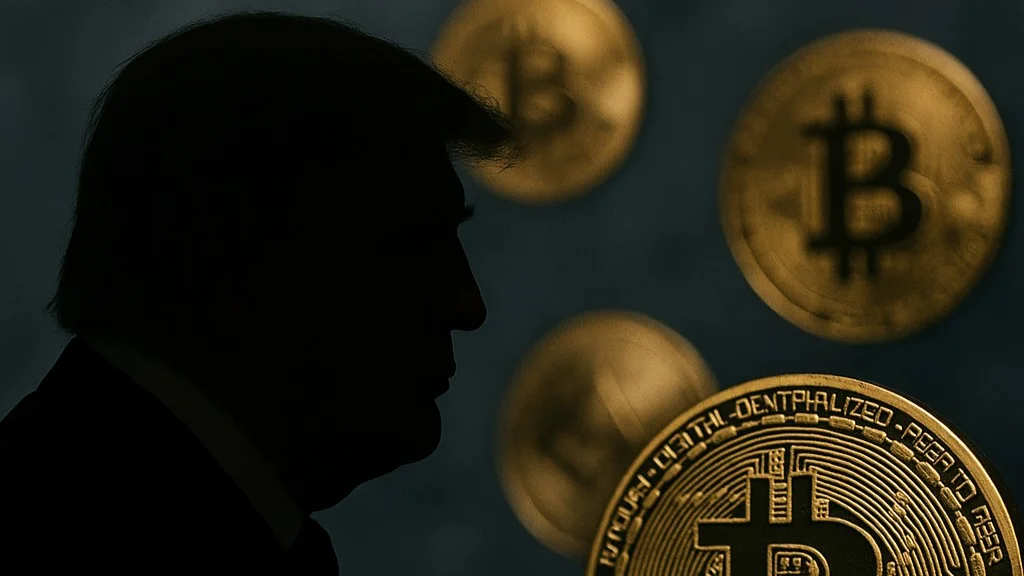
SEC Issues New Regulation for Stablecoins: "Cash Equivalent" Definition Released
The U.S. Securities and Exchange Commission (SEC) has published new staff guidance regarding accounting rules for stablecoins. According to Bloomberg, this guidance suggests that stablecoins, specifically pegged to the US dollar, can be classified as "cash equivalents" under certain circumstances. This signals a critical development for both institutional investors and companies concerned about regulatory uncertainty in the cryptocurrency sector.What does the definition of "Cash Equivalent" mean?The new SEC guidance states that stablecoins, which are pegged 1:1 and have a secured repayment mechanism, can be considered cash or cash-like assets in traditional accounting systems. This provides direct legal clarity, particularly for reserve-backed stablecoins like USD Coin (USDC). These assets, previously subject to debate regarding their status as securities, are now classified as "not intended for investment" and "not intended for speculation." The SEC's statement states the following:“Generally, four main criteria are required for a stablecoin to be considered a security: (1) the sale proceeds are directed to a reserve fund and are not intended for investment purposes; (2) the distribution method does not encourage speculative trading; (3) a reasonable purchaser would not view the stablecoin as an investment vehicle; and (4) the reserve fund is sufficient to cover redemption upon request.”Project Crypto and a New Era in RegulationThis guidance, enacted under the leadership of SEC Chairman Paul Atkins, is part of the recently announced “Project Crypto” initiative. This project represents a modernization process aimed at migrating America’s financial markets to blockchain. Atkins argues that the SEC should adopt a more flexible and innovative approach to crypto assets. In this context, this new approach to not treating stablecoins as securities has been welcomed across the industry.USDC and Market ImplicationsThe new regulation most significantly impacts stablecoins like USDC, known for their transparency and regulatory compliance. USDC, issued by Circle, currently has a market capitalization of approximately $64.3 billion. Its 24-hour trading volume is $11.98 billion. The price change over the past seven days, with a 0.03% decrease, signals stability, while a 0.01% increase was observed over the 24-hour period.This stable outlook suggests that stablecoins may have the potential for greater institutional adoption following the SEC's guidance. The new classification could make it easier for banks and publicly traded companies, in particular, to incorporate stablecoins into their balance sheets. It could also pave the way for companies that have been hesitant to enter the stablecoin market due to their securities status.Although official statements from Circle and similar major companies have not yet been released, market participants view this move by the SEC as a positive signal. The SEC's latest move could mark a significant turning point in the cryptocurrency market's integration with the traditional financial system. The US regulatory framework, previously criticized as strict and vague, appears to be softening with this latest development. If this approach continues, it may not be surprising if the US assumes leadership in the global stablecoin market.
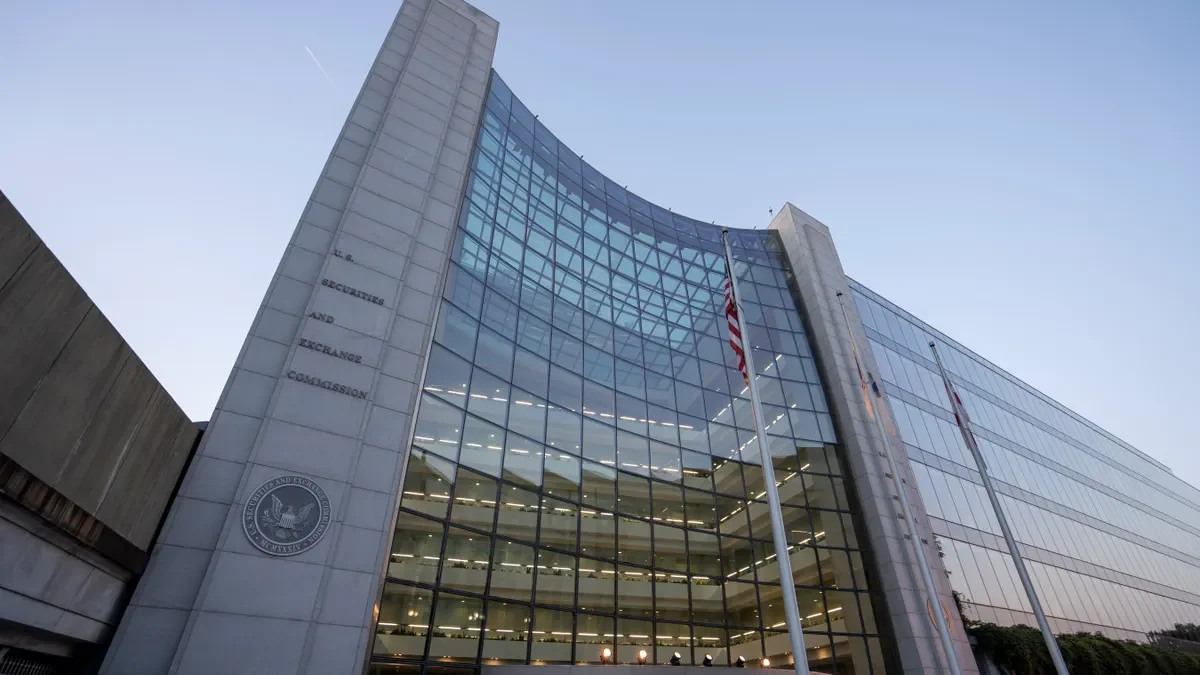
OP Comment and Price Analysis August 5, 2025
OP Technical AnalysisWhen we analyze the OP chart, we clearly see that the short-term falling wedge formation has broken above. This breakout signals that the price could gradually surge upwards towards the formation’s target. The technical target of this falling wedge formation is approximately $2.77, yet the price needs to exceed some strong resistance areas before it reaches this target level.The first key resistance level ahead is the range between the levels at $0.84 - $0.91, but the coin is currently trading around $0.75. If OP can break above this resistance range with huge volume, then we have other resistance levels up at $1.12, followed by $1.39 - $1.50.We must add that the range between the levels at $1.39 - $1.50 is technically so important that it intersects not only horizontal resistance but also the long-term falling trendline. If the price cannot break above this range, the price action could be limited; however, $1.89 and $2.77 could be targeted again if OP breaks above this range with great momentum. OP Current View Summary:• The short-term falling wedge formation has broken upward.• The formation's technical target is the $2.77 region.• Immediate resistance: $0.84 – $0.91• Next resistance levels: $1.12 → $1.39 – $1.50• Closes above $1.50 indicate a breakout of both the sideways and long-term downtrend.• Potential medium-term targets: $1.89 → $2.77• The $0.66 level is the first area to follow as support in case of pullbacks.These analyses, not offering any kind of investment advice, focus on support and resistance levels considered to offer trading opportunities in the short and medium term according to the market conditions. However, traders are responsible for their own actions and risk management. Moreover, it is highly recommended to use stop loss (SL) during trades.

Major US Move into Crypto Market: CFTC Greenlights Leveraged Spot Crypto Transactions
The U.S. Commodity Futures Trading Commission (CFTC) is preparing to make a historic change to cryptocurrency regulations. According to the new initiative announced by CFTC interim Chair Caroline Pham, exchanges currently authorized to offer futures contracts will be allowed to offer spot cryptocurrency transactions with leverage.What does the new regulation mean?The model the CFTC is working on envisions exchanges with Designated Contract Market (DCM) status transitioning beyond limited derivatives to direct spot cryptocurrency transactions. Spot transactions allow users to buy and sell assets instantly, while leveraged trading allows investors to take larger positions. This framework will offer both institutional and retail investors more trading options within a regulated and supervised framework. Furthermore, because it is planned to utilize existing legal infrastructure, it can be implemented quickly without waiting for new legislation from Congress. Coordination with the SEC: A move parallel to "Project Crypto"This development, as we reported last week, follows the "Project Crypto" initiative announced by U.S. Securities and Exchange Commission (SEC) Chairman Paul Atkins. This initiative aims to clarify the rules for classifying blockchain-based assets as securities.The CFTC, on its part, wants to create a space suitable for regulating cryptocurrencies as commodities. This signals the emergence of a two-agency digital asset regulatory system in the U.S. Thus, under a collaborative structure between the SEC and CFTC, investors will be able to trade on a more robust basis, both in terms of security and flexibility.Comment period begins: August 18 deadlineCaroline Pham said in a statement, "Starting today, we invite all stakeholders to provide feedback on how leveraged spot crypto asset contracts could be listed on a DCM." This consultation process, launched on the CFTC's official website, will remain open until August 18, 2025. Comments submitted will be shared publicly and actively evaluated in shaping regulations. This process allows various actors in the crypto ecosystem (exchanges, investors, developers, and legal experts) to contribute to the process.In futures trading, investors enter into contracts to buy and sell assets on a specific date. However, in spot markets, assets are bought and sold instantly. Including spot markets in the scope of regulation could allow institutional investors, in particular, to become more active.Leveraged spot trading offers the opportunity to increase potential profits but also carries risks. Therefore, the CFTC emphasizes that the regulations aim to both ensure investor protection and maintain market stability.What does it mean for the crypto market?If this plan is implemented, it could usher in a new era for the US crypto market. Currently, many major investors are cautious about the crypto market due to regulatory uncertainty. However, this move will allow cryptocurrencies to be traded in broader, more regulated markets.
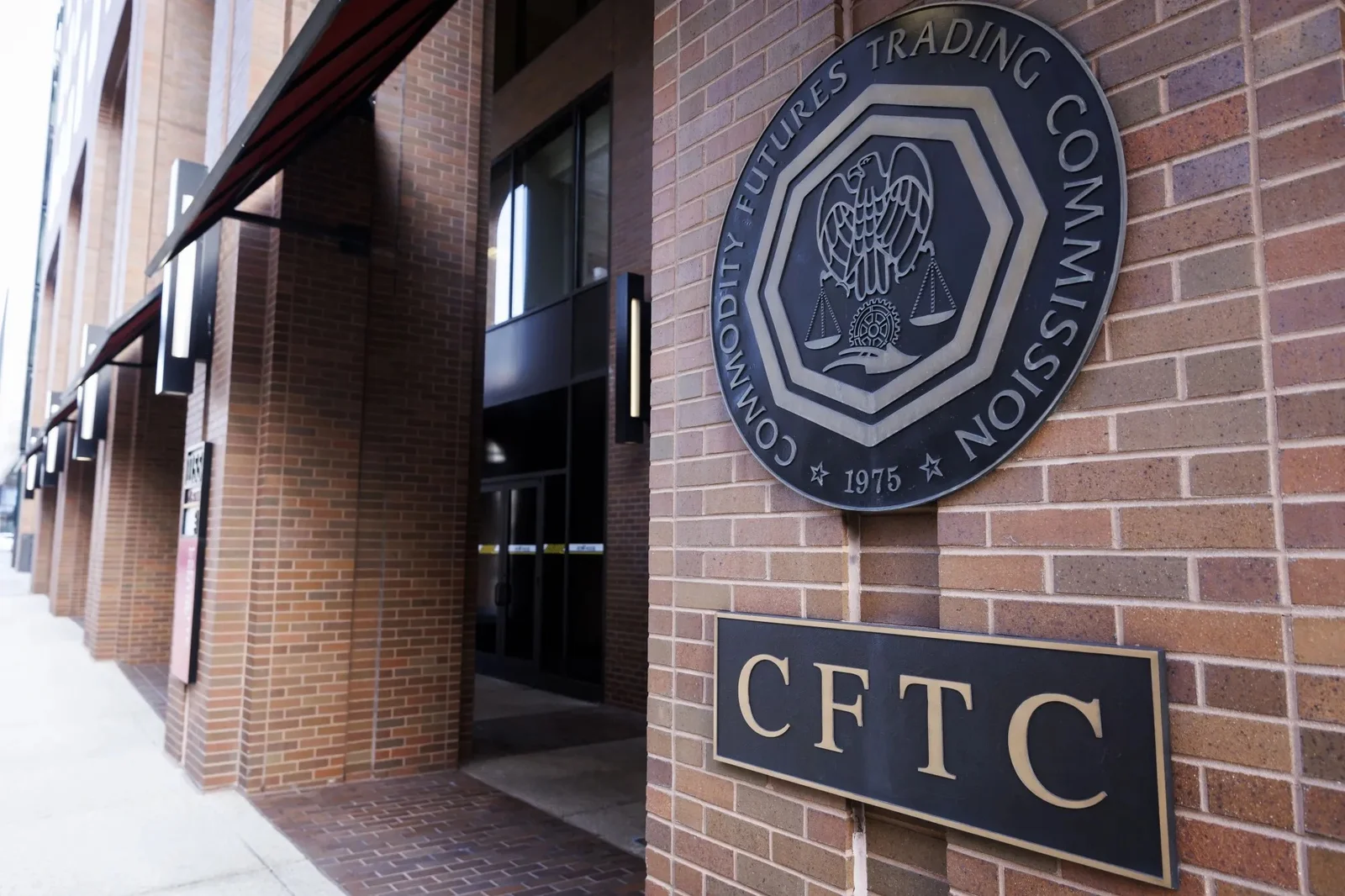
Crypto Move from Corporate Giants: Huge Purchases for TON, ETH, SOL, and BTC
New information released as of August 4th reveals the growing interest of major players in traditional markets in the crypto world. Major assets like TON, Ethereum, Solana, and Bitcoin have already entered the radar of institutional investors. Here are five companies that have announced crypto reserve strategies or made major purchases in the last 24 hours, along with their details:A first for TON on the stock market: Verb Technology acquisitionNASDAQ-listed Verb Technology Co. (VERB) announced that it has signed an exclusive agreement with Kingsway Capital for approximately $558 million. This investment aims to establish the first publicly traded TON strategy firm. Sources familiar with the matter indicate that Kingsway Capital's interest in TON is not new; in fact, founder Manuel Stotz began purchasing TON two years ago. According to a report published by Bloomberg on July 24th, the TON Foundation and Kingsway Capital are also preparing for a new $400 million fundraising process for the Toncoin treasury. Artelo Biosciences Adds Solana to Its ReservesAnother noteworthy development came from the pharmaceutical sector. Nasdaq-listed Artelo Biosciences (ARTL) announced its digital asset reserve strategy centered on Solana (SOL). The company closed a $9.475 million private funding round. This investment made Artelo the first publicly traded pharmaceutical company to include SOL on its balance sheet, making it a cryptocurrency. As part of the funding, shares or options were issued at a price of $10.45, and two three-year options were also available at $10.20 and $50.Ether Reserve Purchases 10,605 ETHEther Reserve LLC, a partnership between The Ether Machine and Dynamix Corporation (DYNX), is continuing its Ethereum accumulation plan. The company purchased an additional 10,605 ETH at an average cost of $3,781. This brings the total amount of ETH accumulated since the beginning of August alone to 345,362. The purchase was financed with $97 million in cash reserves from a previous private funding round. Following the 15,000 ETH purchase last week to celebrate Ethereum's 10th anniversary, this move is seen as a continuation of this long-term strategy.GameSquare's ETH Proceeds-Based Share Repurchase PlanGameSquare, which has attracted attention with its Ethereum revenues, has approved a new share repurchase plan. The company allocated a $10 million fund, equivalent to 2,717 ETH, for the repurchase. This move brings GameSquare's total ETH reserves to 15,630. The company stands out for integrating ETH earnings directly into its balance sheet management strategy.Strategy purchased another 21,021 BTC for $2.46 billion.On the Bitcoin front, the real bombshell came from Strategy. In just one week, the company spent $2.46 billion to purchase 21,021 BTC at an average cost of $117,256. This purchase was made possible by funds previously raised through a 28 million-unit preferred stock offering called "STRC." The company, which raised $2.521 billion through the IPO, continues to demonstrate its commitment to crypto.
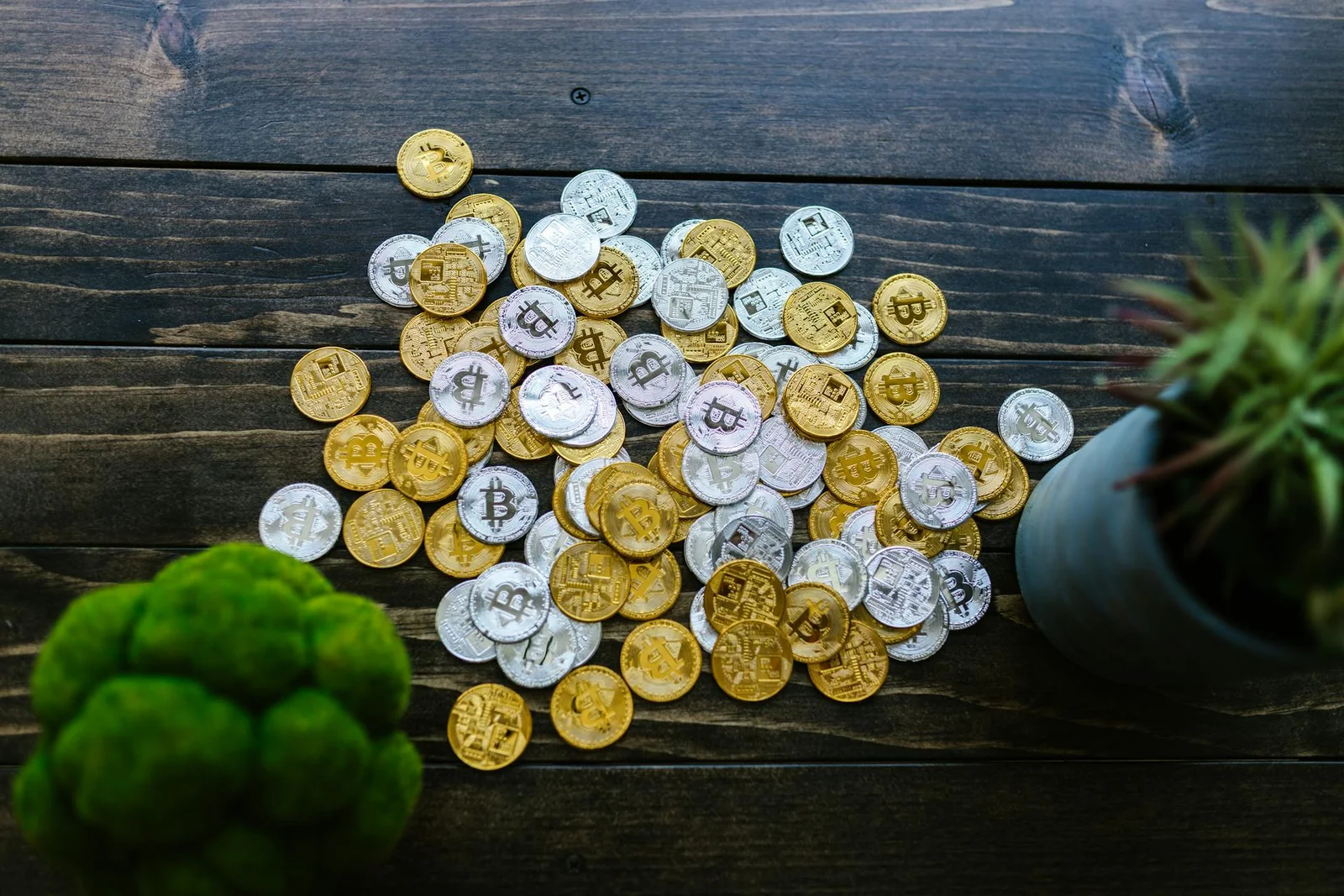
15-Week Rally Ends: Investors Exit BTC and Turn to ADA, SOL, XRP, ETH
According to the latest data from CoinShares, there were net outflows of $223 million from digital asset investment products last week. This development marks the end of a 15-week streak of uninterrupted inflows. While funds experienced a strong inflow of $883 million at the beginning of the week, outflows in the second half of the week turned the overall picture negative.According to experts, this wave of outflows is driven by the hawkish messages from the US Federal Reserve (Fed) and higher-than-expected economic data. CoinShares Research Director James Butterfill stated that the outflow, which exceeded $1 billion on Friday alone, stemmed from a "general risk-off" atmosphere. Butterfill noted that a total of $12.2 billion in inflows over the last 30 days constituted half of the inflows since the beginning of the year, and that the recent outflows could be interpreted as profit-taking.Sharp decline in Bitcoin fundsLast week, $404 million in outflows from Bitcoin-based investment products occurred. This constituted the majority of the total outflows. US-based spot Bitcoin ETFs, in particular, played a leading role in this decline. Data shows that these ETFs saw $642.9 million in outflows on a weekly basis. Nevertheless, a total of $20 billion has flowed into Bitcoin funds since the beginning of the year, demonstrating high investor interest.Positive sentiment continues for Ethereum and some other altcoinsEthereum investment products, meanwhile, extended their positive streak to a 15th week. Last week, these products saw a total net inflow of $133.9 million. This consistent demand for Ethereum marks the longest uninterrupted inflow period since mid-2021.Notable data also emerged on the altcoin front. XRP products closed the week with net inflows of $31.3 million, Solana $8.8 million, Cardano $1.3 million, and Sui $0.8 million. The largest outflows by fund provider came from the following institutions:ARK 21Shares/USA: $442 millionFidelity Wise Origin Bitcoin Fund: $354 millionGrayscale Investments: $243 millionBitwise Funds: $106 millionIn contrast, iShares ETFs led the way, closing the week with $749 million in inflows. However, monthly data shows this fund had a net loss of only $3 million. The US Leads the Way by CountryRegional data, however, reveals that outflows largely originated from the US. US-based funds saw a total outflow of $383 million last week, followed by Germany with $35.5 million and Sweden with $33.3 million.Additionally, significant inflows were noted in some regions:Hong Kong: $170.4 million inflowSwitzerland: $52.4 million inflowCanada: $12.4 million inflowAccording to CoinShares data, total assets under management (AUM) in digital asset investment products reached $215.2 billion. While the majority of these assets are concentrated in US-based funds, iShares ETFs had the largest AUM at $94.8 billion.
